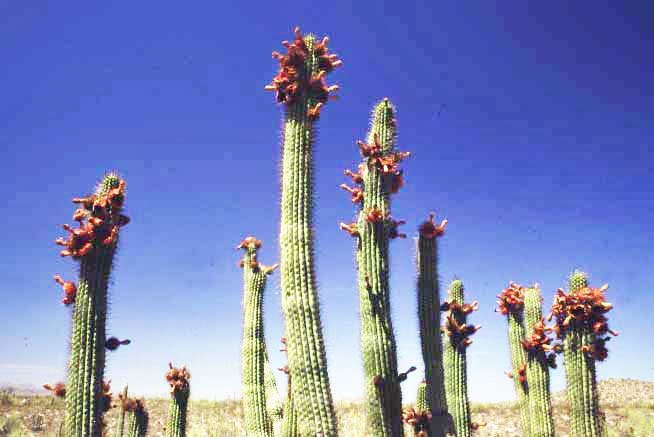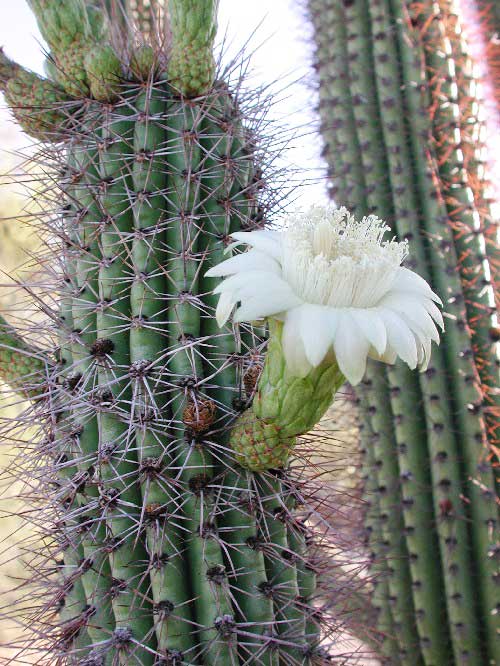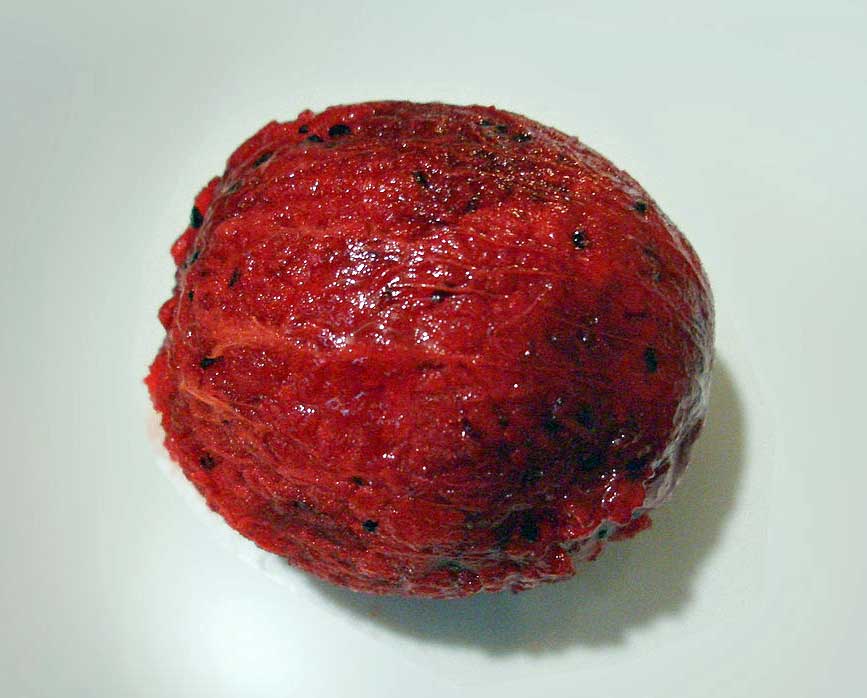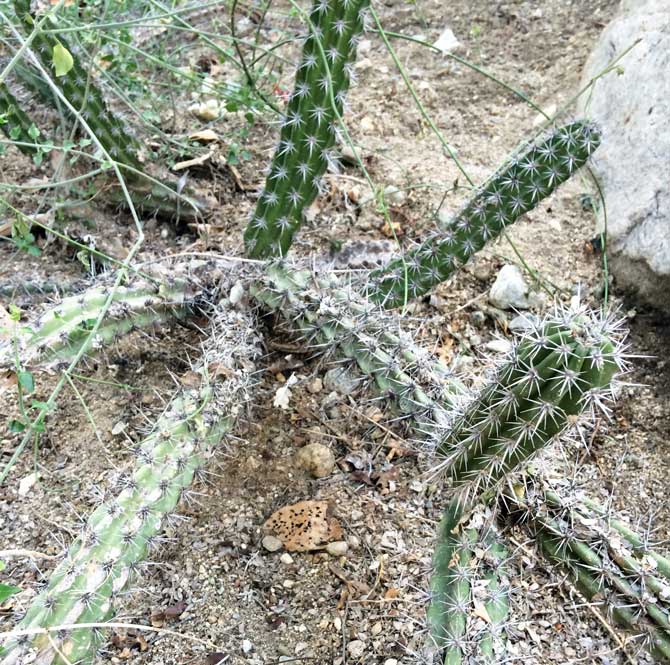Ethnobotany of southern California native plants:
Pitaya (Stenocereus thurberi)

photo is public domain, attributed to the National Park Service
Fleshy, purple fruits form at the top of organ pipe cactus in Arizona.

credit: Eliazar Parra Cardenas CC BY 2.0, via Wikimedia Commons
In spring, white flowers emerge from the branches of the organ pipe cactus.

credit: pompilid GFDL, CC-BY-SA-3.0
Native Americans in Mexico and the southwestern US ate pitaya fruit raw or dried the pulp into a sweet syrup.
Pitaya (Stenocereus thurberi)
Pitaya is a fruit that grows on the organ pipe cactus in Mexico and in the southwest region of the United States. This fleshy and colorful fruit has a refreshing and slightly tart taste. The bright red fruit is also referred to as ‘pitaya dulce’. The genus of this cactus is Stenocereus.
Now, not to confuse you – but there is another closely related fruit, that is called pitahaya. Pitahaya is also known as dragon fruit. Pitahaya (note the extra ‘h’ in the spelling) also grows on cactus and, is also native to Mexico. However, pitahaya (dragon fruit) was exported during the age of exploration and now grows all over the world. Pitahaya has now integrated into the culinary culture of southeast Asia, Polynesia, Australia and many other nations. The genus of pitahaya (dragon fruit) is Hylocereus.
Okay, back to discussing pitaya.
Pitaya mexico fruit grows on the organ pipe cactus
The organ pipe cactus is notable for its long sprawling branches that resemble pipes on an organ. These pipe-like branches can reach 30 feet in height. If you ever want to visit this plant, head down to southern Arizona and visit Organ Pipe National Park. This cactus stands out prominently on the desert landscape near the Mexican border.
Creamy, white flowers appear on the cactus branches in late spring. A few months later, just before the summer rains appear, a pulpy fruit emerges. This fruit usually has scarlet colored skin with purple colored flesh. Large seeds are embedded in the pulp.
In 2018, CNN ran a compelling travel story. Tourists visit Jalisco to synchronize with the local pitaya harvest. Sounds like a great excuse to travel in Mexico and sample the native cuisine.
Pitaya cactus fruit was a favorite food for Native Americans
The pitaya fruit was an important food source for Native Americans in Baja and southern California. In fact, remaining members of the Seri tribe still harvest the fruit.
The Tohono O’odham and Pima people collected pitaya fruits from the tops of the organ pipe cactus. They ate this fruit in a few different ways. The seeds and purple flesh were mashed together to form a sweet paste. This paste could be eaten raw or dried out to form a spreadable jelly.
The seeds were often parched in the dry, desert sunlight. These parched seeds were then stored for long-term use in jars or baskets. Months later, the seeds could be ground into meal for seed cakes.
Both the Pima and the Tohono O’odham people also enjoyed making wine from pitaya mexico fruits.
The Seri people were very fond of eating pitaya cactus fruit. However, not content to only use the fruits, the Seri also combined dried organ pipe branches with sea lion oil to make a form of caulking compound. This caulk was used to weatherproof their shelters.

A young organ pipe cactus (Stenocereus gummosus) grows from the desert floor. This species is referred to as ‘pitaya agria’ in Sonora, Mexico.
On a separate page, I describe my daily superfood drink. I combine a superfood plant powder with a plant fiber supplement. It’s delicious and curbs my appetite.
Looking for a book that will connect you with the wild elements of this planet?
Here’s my recommended reading list.
Warning: All of my books contain a botany, ethnobotany or drug discovery component.
Please return to our main Ethnobotany of southern California page.
On our main ethnobotany page, we present a clickable list of the southern California native plants that became a part of the culture of Native Americans and early European settlers. These plants were used for medicine, food, shelter, drink, tools and art.
Warning: The information about plants on this website is intended for general educational purposes only. The author of this website accepts no responsibility for problems arising from the user’s misidentification, misuse, or use of plants. Please read the full TERMS associated with this website.
References:
Castetter, Edward F. and Willis H. Bell 1942 Pima and Papago Indian Agriculture. Albuquerque: University of New Mexico Press. First Edition. (p. 59)
Castetter, Edward F. and Willis H. Bell 1937 Ethnobiological Studies in the American Southwest IV. The Aboriginal Utilization of the Tall Cacti in the American South. University of New Mexico Bulletin 5:1-48, pitaya mexico (p. 11)
